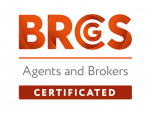How Nuts and Seeds Are Redefining Functional Snacking

Recent Posts
Categories
Functional snacks are no longer just something to grab between meals, they’ve become part of how people plan their nutrition.
What used to be a quick filler is now a purposeful choice, shaped by demand for protein, plant-based ingredients and clean-label formulations. At the centre of this shift are nuts and seeds, valued for their natural nutrition, versatility and label-friendly appeal.
If you’re developing a high-protein bar, allergen-friendly cluster or vegan snack ball, this post looks at where the functional snacking market is heading and how nuts and seeds can help you stay ahead.
The global functional snacks market is forecast to reach around £156 billion ($62.3 billion USD) by 2035, growing at a steady 5.6% CAGR between 2025 and 2035. Functional snacks solve more than hunger; people choose them to support energy, meet diet goals, and, of course, fit into their busy lifestyles.
When Lunch Shrinks, Snacking Grows
A solid 35% of consumers snack most between 2 and 5 PM, prime time for an energy dip. Snack bars, protein-rich clusters, and energy balls are the go-to formats. Consumers choose them because they’re portable, pre-portioned and offer a steadier energy release than sugary treats.
Compared to more novel ingredients, nuts and seeds feel simple. Nutritionally? They're complete, trusted, and, as we know, incredibly adaptable offering:
- Rich sources of natural protein and healthy fats
- Fibre content contributes to satiety and digestive wellness
- Essential vitamins and minerals like magnesium, vitamin E, and selenium
- 100% alignment with plant-based, keto, and allergen-free goals
A few of our favourites:
- Peanuts for flavour and nutritional value
- Cashews help bind and soften energy balls naturally
- Chia and flax add omega-3 content and fibre
Snack Formats That Fit the Trend
Energy Balls
For consumers skipping lunch (or breakfast), energy balls act as a quick 'nutrient bite.' They work with a wide range of nut butters, binders and inclusions, and align easily with gluten-free, vegan and 'barely-processed' positioning.
Protein Clusters
Consumers love protein-rich clusters. They can be a simple way to premiumise simple ingredients and give more texture than classic mixes or puffs; ideal for wellness-forward impulse buys.
Snack Bars
Snack bars haven’t faded in popularity; if anything, their versatility adds value to innovation. They’re often the top pick for:
- Adding in adaptogens or probiotics
- Targeting active adults or casual gym-goers
- Breakfast replacement with added fibre or functional fats
Recipe Development
Natural ingredients don’t always behave consistently, and binding elements like dates or nut butter can cause issues. For example, dry weights and moisture levels in dried fruits can affect texture and shelf life. The choice of protein source also influences the final finish, while particle size plays a key role in how well ingredients stick together or crumble apart.
Texture needs to last through storage and distribution to deliver the same experience with every bite.
Trends Worth Watching...
One clear area of growth is the use of bioactive ingredients such as mushrooms, matcha and turmeric. These additions bring both functional benefits and flavour interest, helping brands tap into the broader wellbeing trend.
Women’s sports nutrition is another growing trend, and developers are beginning to use plant proteins that support hormonal balance and recovery.
There’s also increasing interest in snacks designed as “meal bridges”, that sit between comfort and functionality. As lifestyle boundaries continue to blur, snacks will be under even more pressure to deliver multiple benefits in small, satisfying portions.
Let’s Help You Build Better-For-You Snacks
We've helped our clients stay ahead of evolving consumer trends for over 125 years. Our team will help you move from plan to product with less guesswork, get in touch to learn more.










